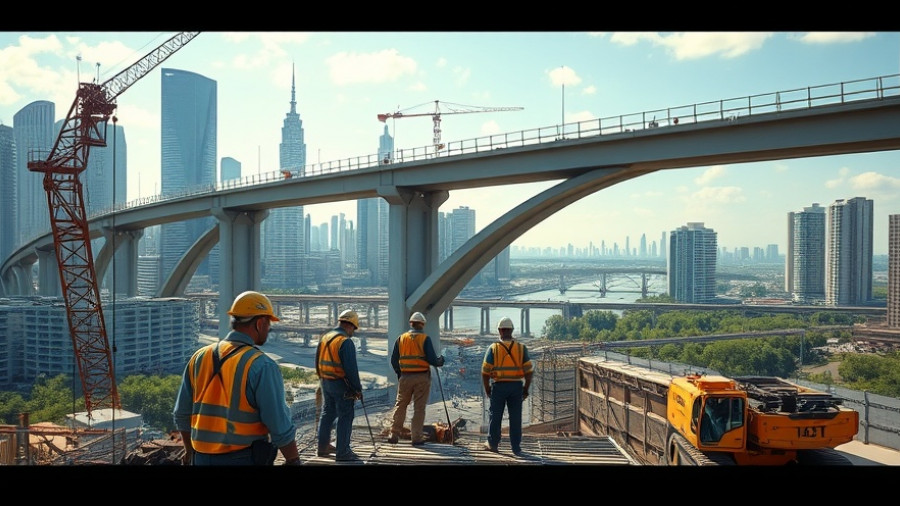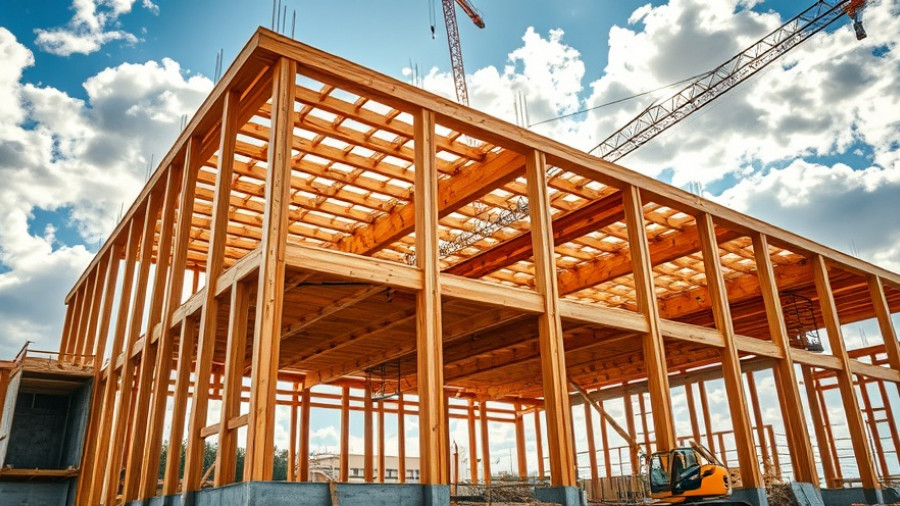
Amkor's Ambitious Move: A Game Changer for Arizona's Semiconductor Landscape
In a significant shift towards reinforcing its manufacturing capabilities, Amkor Technologies is relocating its planned $2 billion semiconductor packaging and testing facility to a larger site in north Peoria, Arizona. After navigating local opposition and negotiations, this strategic decision is set to enhance operational flexibility and meet the rising customer demand for semiconductor components, pivotal in today’s tech-driven economy.
A Welcomed Transition: The Peoria Innovation Core
Amkor's new facility will blossom on a 104-acre site within the Peoria Innovation Core, an evolving technology hub aiming to stimulate local economic growth. The move comes on the back of the city's recent $46.7 million land acquisition from Arizona Trust Land, designed to jump-start this tech-centric initiative. With construction slated to begin imminently, this project aims to bolster Peoria’s reputation as a burgeoning center for semiconductor production.
The Financials: Unpacking the Economic Impact
Amkor is not stepping lightly into this venture. It has been allocated up to $407 million through the CHIPS and Science Act to support this investment and the anticipated creation of over 2,000 jobs. These figures underline a broader industry trend: as semiconductor companies pivot towards domestic manufacturing, substantial economic benefits are expected for local communities.
Community Concerns Addressed: Context and Change
Initially, Amkor's project faced resistance from nearby residents due to environmental and health concerns over its original proposed site of 56 acres within the Vistancia development. In response, Amkor engaged the community through various webinars aimed at addressing these concerns. The new location's increased distance from schools and populated areas aligns with community interests and showcases a commitment to being not just a corporate citizen, but a responsible one.
Strategic Implications: Broadening the Semiconductor Landscape
Amkor's relocation signifies more than just a site change; it’s a strategic pivot aligning with growing market demands. The semiconductor industry is on the brink of rapid expansion, driven by increased consumption in consumer electronics, automotive technology, and telecommunications. Amkor's CEO Giel Rutten remarked on the new site's capacity to accommodate larger production scales, reflecting the company’s proactive approach in an evolving market.
Future Outlook: Predicting Growth in Tech Manufacturing
With production expected to commence by early 2028, this facility could position Peoria and Arizona as critical players in semiconductor manufacturing. The ability of Amkor to adapt its location in response to community feedback, while simultaneously adhering to market demands, paints a promising picture for the future of domestic chip production—an area recognized as vital not only for economic resilience but also for national security.
This combination of strategic relocation, community engagement, and financial backing highlights key trends in the construction and semiconductor industries. As businesses seek to navigate shifting market landscapes, the lessons from Amkor’s experience can inspire both property developers and facility managers to prioritize community feedback and strategic foresight in their own projects.
For stakeholders involved in commercial construction or technology innovation, this development serves as a crucial reminder of the interconnected roles of local engagement, financial investment, and strategic planning in fostering sustainable growth.
 Add Row
Add Row  Add
Add 




Write A Comment